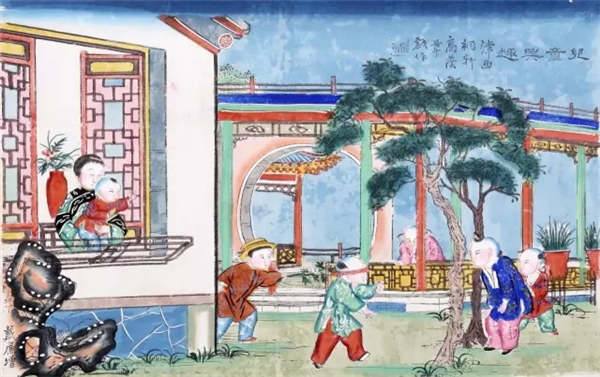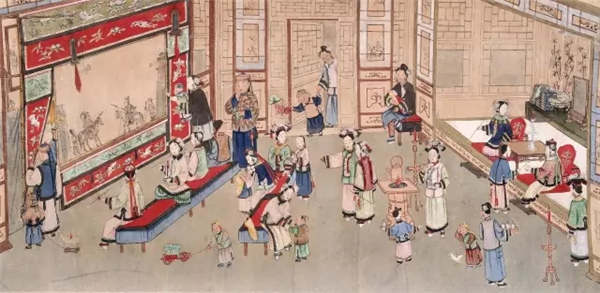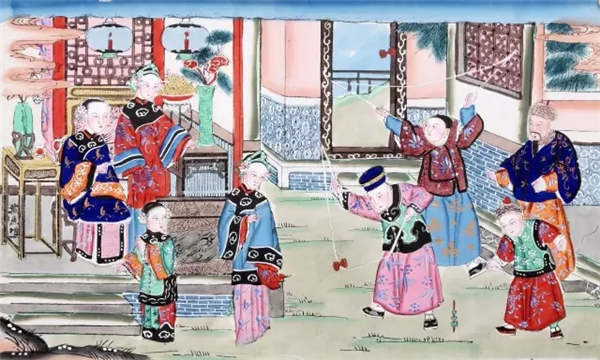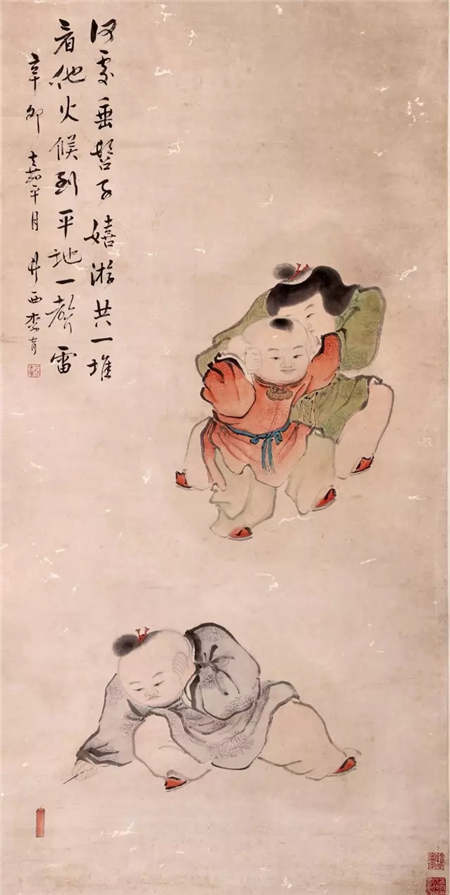| Home > China Feature |
Culture Insider: Children's games in ancient China
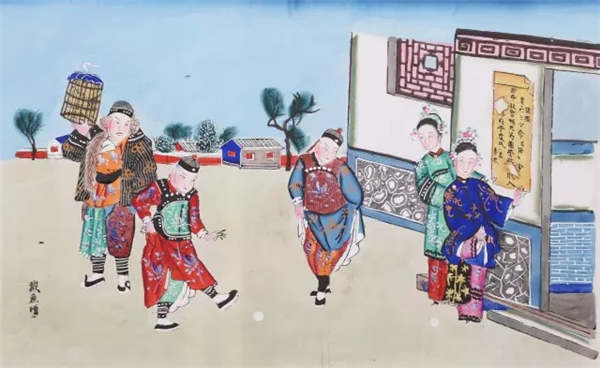 |
|
The New Year painting from Qing Dynasty depicts people kicking stone balls in the yard. Collected by the Capital Museum. |
Stone balls
During the Qing Dynasty (1644-1911), kicking a stone ball around was a popular sport in the northern part of China, and it was often played in the winter to keep warm. Stones were carved into small balls and kicked along with feet.
In 1999, the sport was included in the competition item in the 6th National Ethnic Group Traditional Sports Meeting held in Beijing.
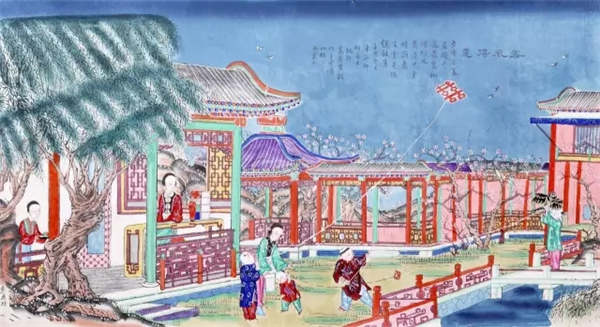 |
|
A Yangliuqing New Year painting from the Qing Dynasty depicts children flying kites in the garden. Collected by the Capital Museum. |
Flying kites
Kites have quite a long history. The earliest kites were made of wood, instead of paper. Nowadays, the three most famous kites are the Beijing kite, Tianjin kite
and Weifang kite, which each has distinctive features. The swallow-shaped kite is a well-known Beijing style.
Art
 more
moreChina Beijing International Diet ...
Recently, The hit CCTV documentary, A Bite of China, shown at 10:40 ...

Exhibition of Ancient Chinese Jad...
At least 8,000 years ago, Chinese ancestors discovered a beautiful...

Longmen Grottoes
The Longmen Grottoes, located near Luoyang, Henan Province, are a tr...

Custom
 more
moreWeb Dictionary
Martial Arts
Chinese martial arts practitioner pens 400 guide...
A Chinese martial arts practitioner in northern China's Hebei provin...
Tai Chi Master Class Held in Moscow
MOSCOW, June 15, 2016 (Xinhua) -- Students learn from Shaolin ...
Celebriting 70 years' efforts in restoring Mogao...
Work is being carried out at the restoration site of cave No 98 a...





 print
print  email
email  Favorite
Favorite  Transtlate
Transtlate 